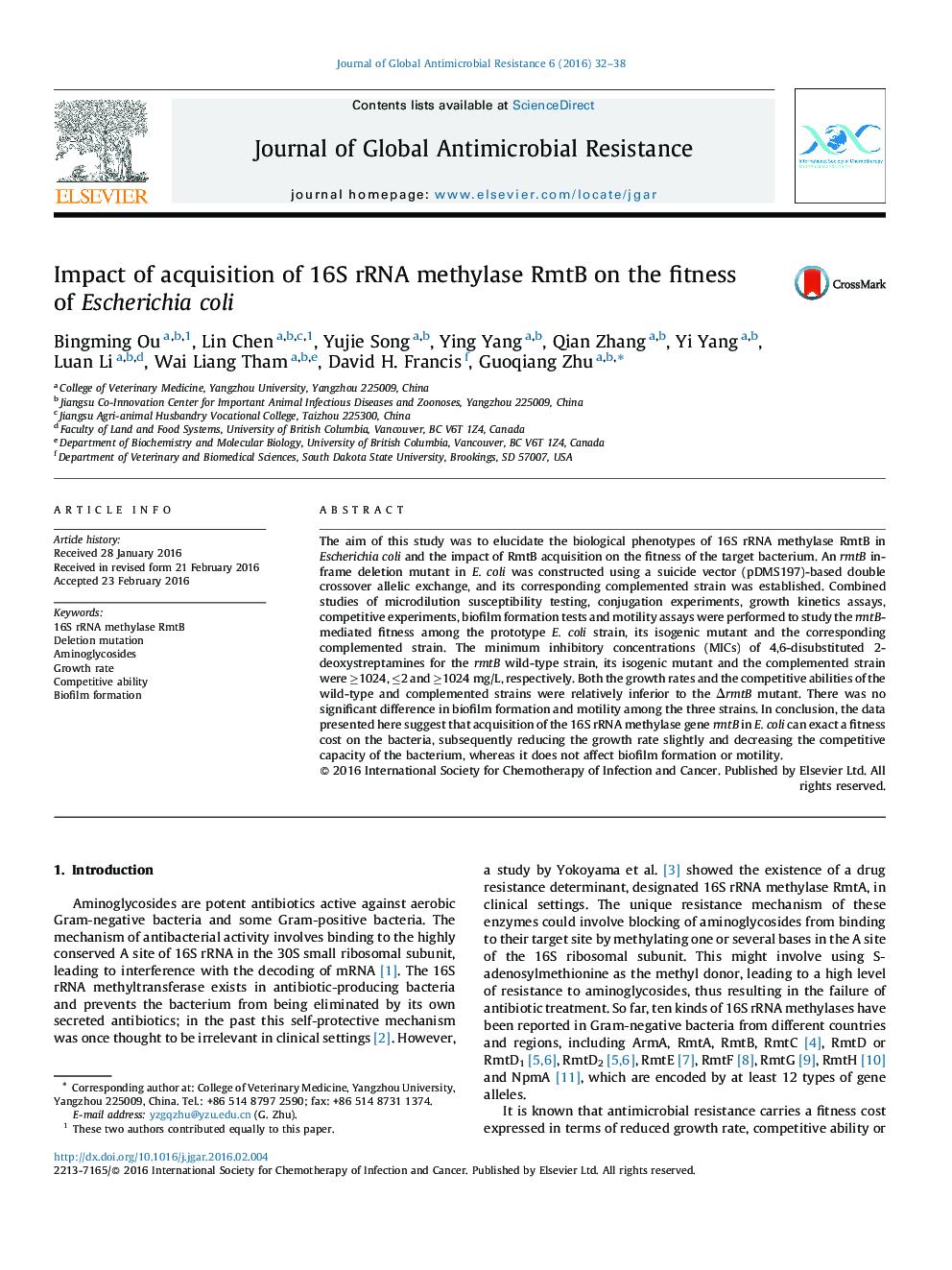| Article ID | Journal | Published Year | Pages | File Type |
|---|---|---|---|---|
| 8746644 | Journal of Global Antimicrobial Resistance | 2016 | 7 Pages |
Abstract
The aim of this study was to elucidate the biological phenotypes of 16S rRNA methylase RmtB in Escherichia coli and the impact of RmtB acquisition on the fitness of the target bacterium. An rmtB in-frame deletion mutant in E. coli was constructed using a suicide vector (pDMS197)-based double crossover allelic exchange, and its corresponding complemented strain was established. Combined studies of microdilution susceptibility testing, conjugation experiments, growth kinetics assays, competitive experiments, biofilm formation tests and motility assays were performed to study the rmtB-mediated fitness among the prototype E. coli strain, its isogenic mutant and the corresponding complemented strain. The minimum inhibitory concentrations (MICs) of 4,6-disubstituted 2-deoxystreptamines for the rmtB wild-type strain, its isogenic mutant and the complemented strain were â¥1024, â¤2 and â¥1024 mg/L, respectively. Both the growth rates and the competitive abilities of the wild-type and complemented strains were relatively inferior to the ÎrmtB mutant. There was no significant difference in biofilm formation and motility among the three strains. In conclusion, the data presented here suggest that acquisition of the 16S rRNA methylase gene rmtB in E. coli can exact a fitness cost on the bacteria, subsequently reducing the growth rate slightly and decreasing the competitive capacity of the bacterium, whereas it does not affect biofilm formation or motility.
Related Topics
Life Sciences
Immunology and Microbiology
Applied Microbiology and Biotechnology
Authors
Bingming Ou, Lin Chen, Yujie Song, Ying Yang, Qian Zhang, Yi Yang, Luan Li, Wai Liang Tham, David H. Francis, Guoqiang Zhu,
